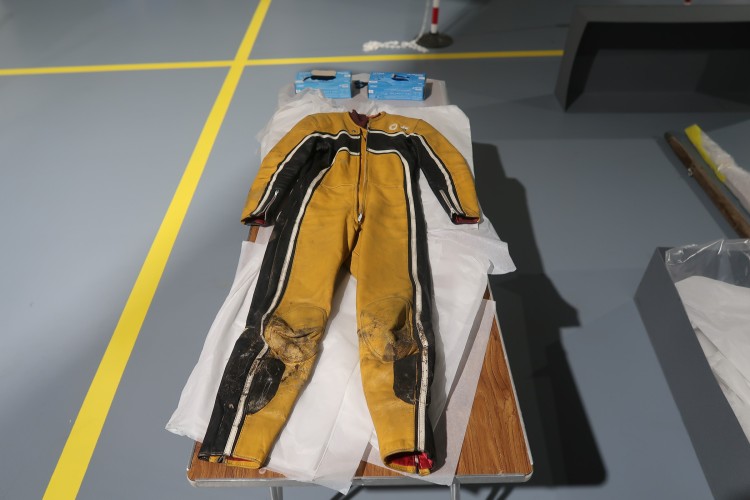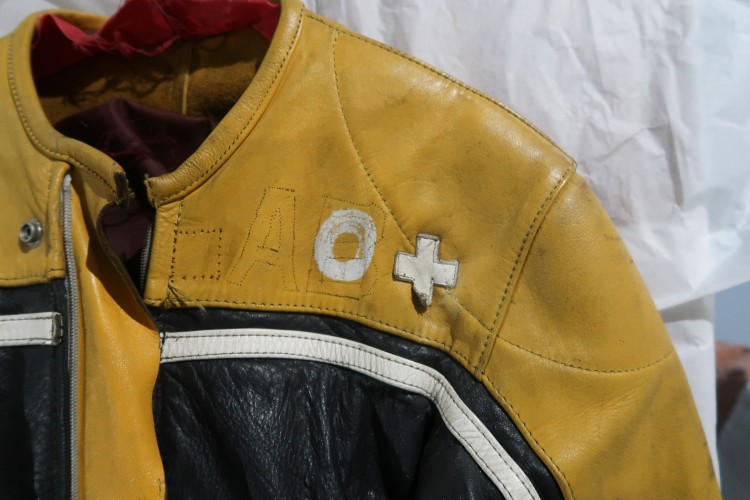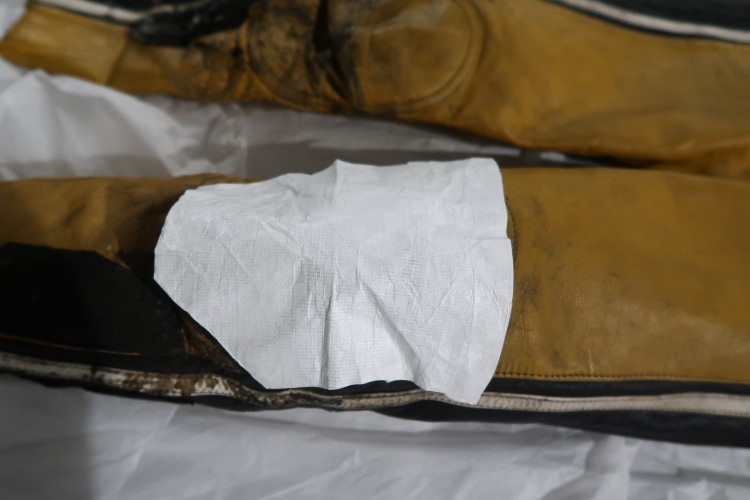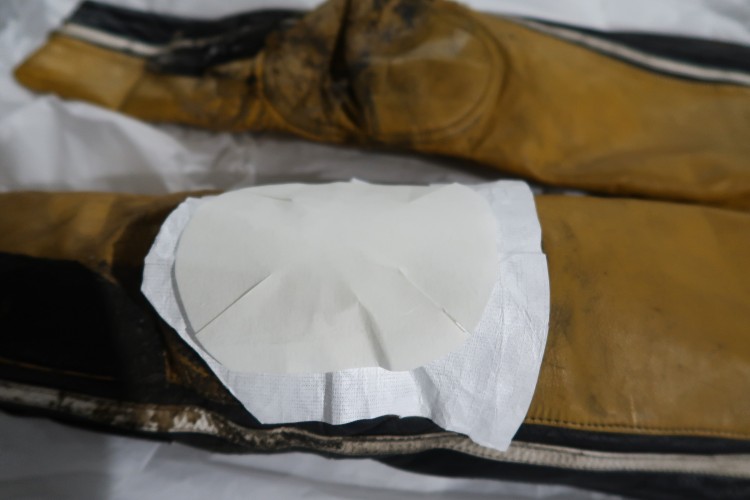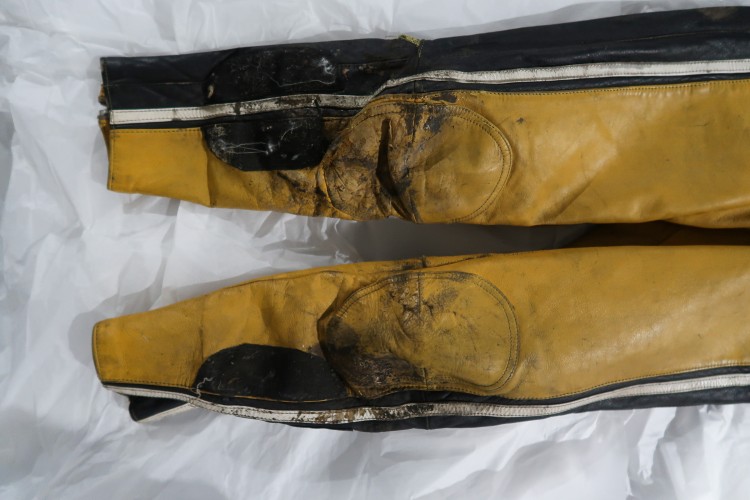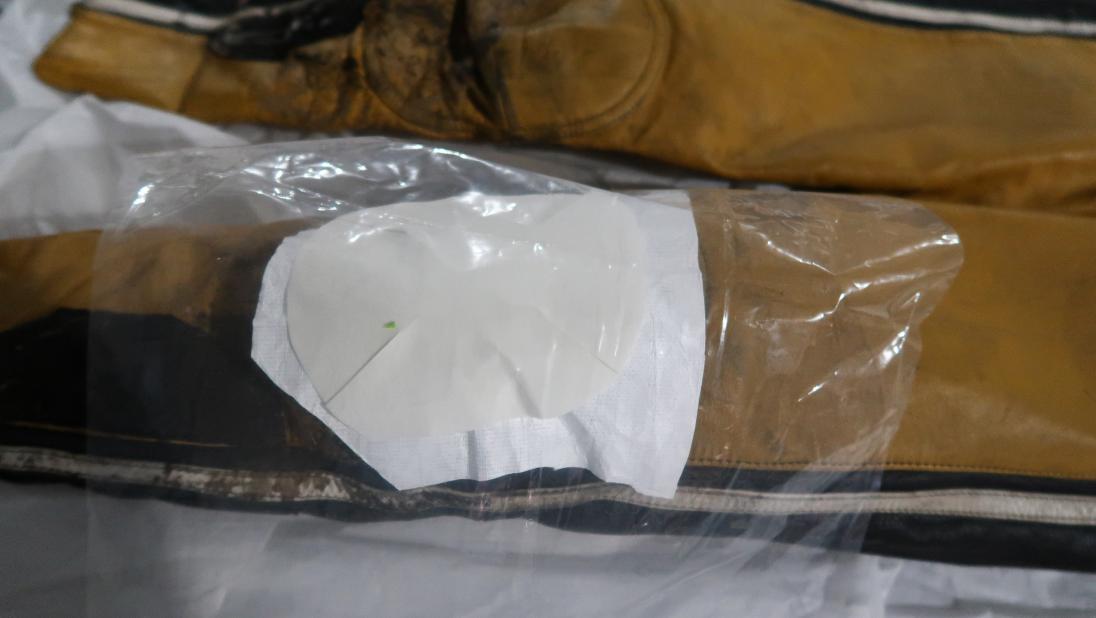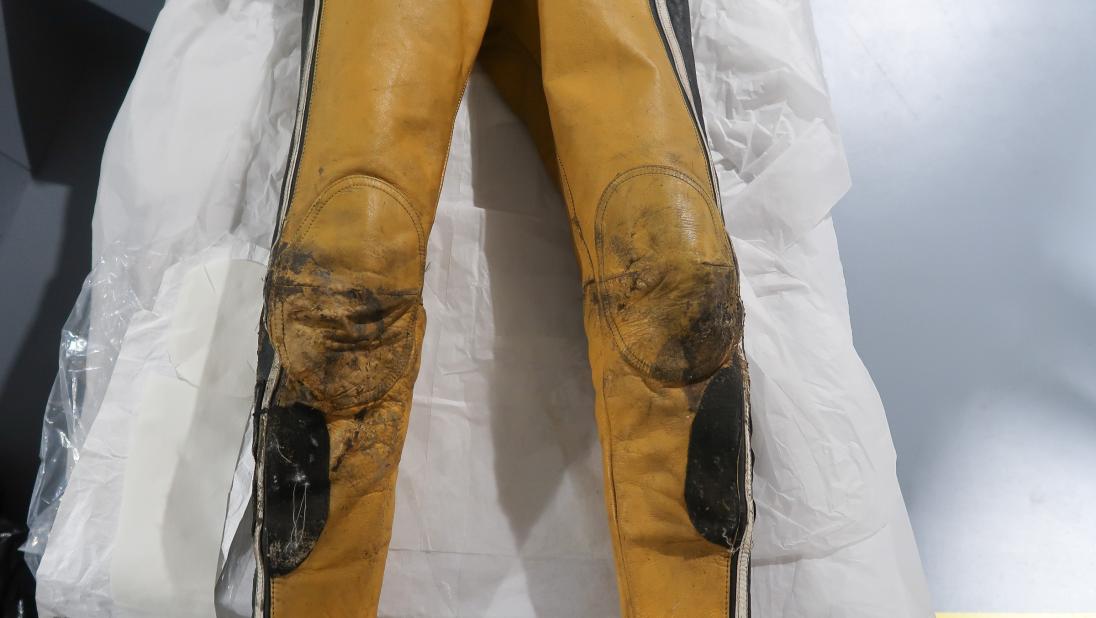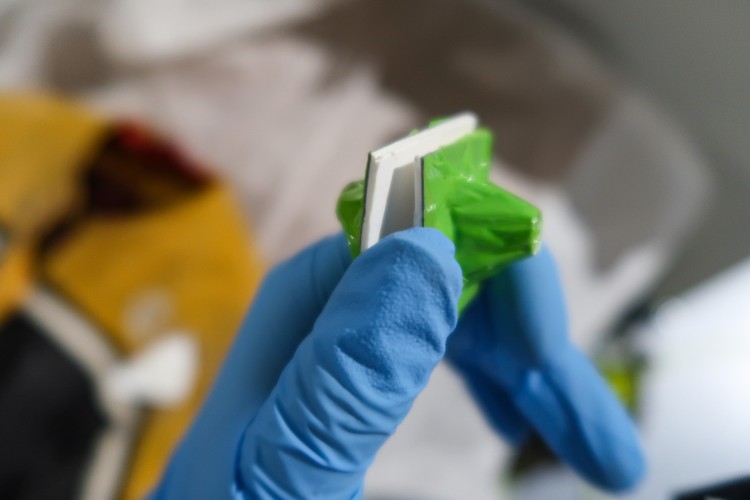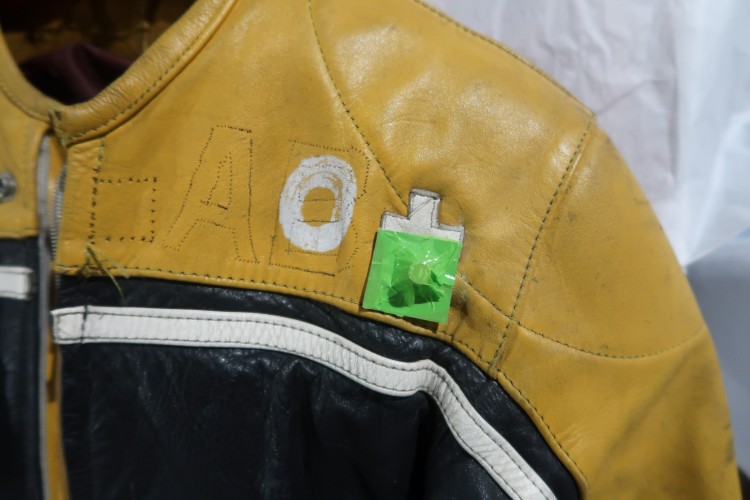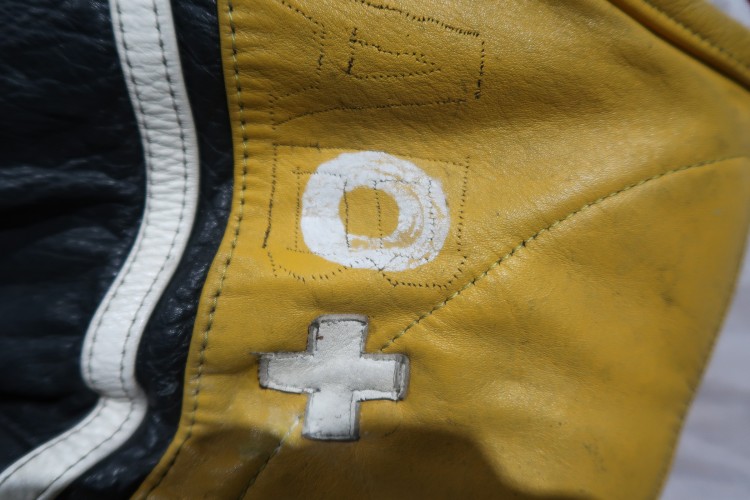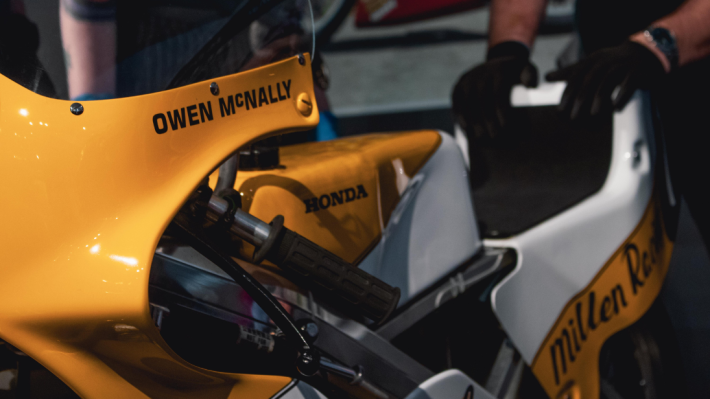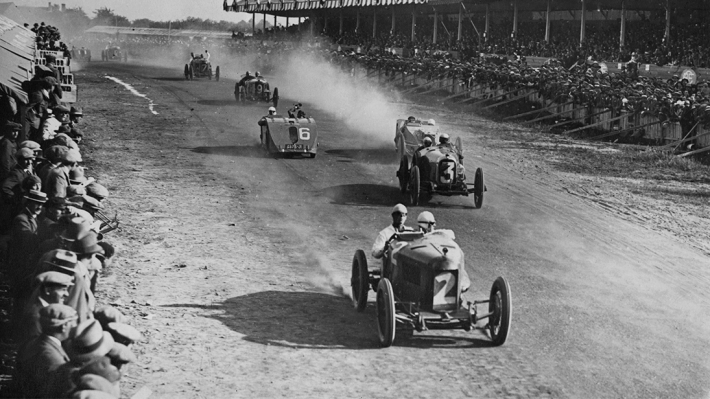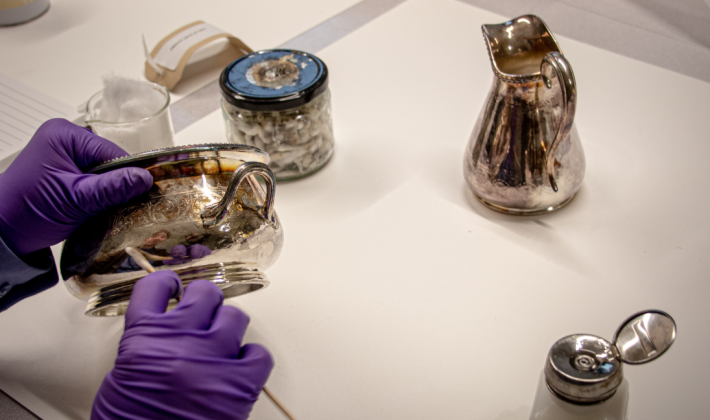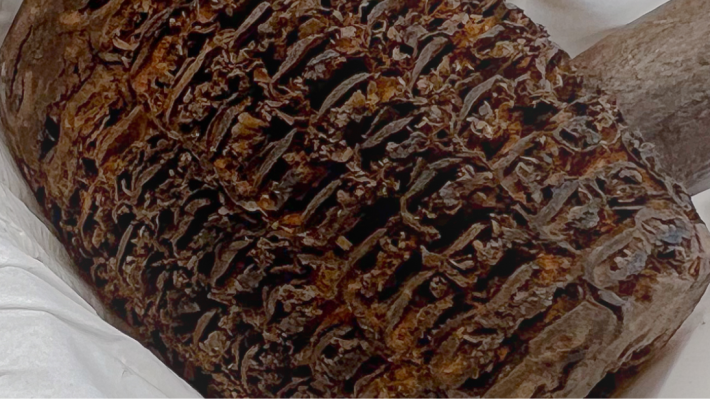
Conserving the Dunlop Leathers
Join Object Conservator Shannon Campbell as she works on an early racing suit worn by local racing legend, Robert Dunlop.
Robert Dunlop
Born on November 25, 1960, in Armoy, Northern Ireland, he became a legendary figure in road racing – particularly known for his prowess at the Isle of Man TT. His dynamic career was marked by numerous victories and his unmatched determination on the track. Dunlop captivated audiences with his thrilling performances, cementing his status as a racing icon. Tragically, the sport lost this remarkable talent on May 15, 2008, in a racing accident at the North West 200. Robert Dunlop's legacy lives on, not only through his victories but also in the hearts of racing enthusiasts worldwide.

Initial Assessment
When the suit arrived to our off-site store, we were very excited to find that the leather revealed a rich history of use on the track. Particularly around the lower portions, abrasion and minor losses to the surface are evidence of a fast and furious past.
We also noticed some deformation to areas such as the knee panels.

Being a hygroscopic material, leather readily absorbs moisture from the air. As its moisture content increases, the leather becomes more flexible, making it more susceptible to deformation. If left in this state, the resulting creases and folds become increasingly challenging to revert over time, and contribute to cracking and loss.
The presence of stitch holes tell us that at one point in the life of the suit, there were (now lost) patches stitched to the front and back. These were an ‘AB’, which relates to the wearer’s blood type, and ‘DUNLOP’ which I don’t think requires explanation!

Of interest, is that ‘AB’ has been replaced with a painted ‘O’, the ‘+’ patch has been left in place- suggesting two separate wearers. At this stage, it is unknown which is associated with Dunlop.
The Conservation Process
The goal of this treatment is to prepare the suit for display in our Driven gallery at the Ulster Transport Museum. The approach will be as minimally invasive as possible, only intervening where issues cause concern for stability. Preserving the suit's story is paramount, and through conservation we’re aiming to safeguard this, ensuring it can be shared for as long as possible in optimal condition.
I begin by removing any surface dust which might have accumulated in storage, using a soft brush. We cover the vacuum head with mesh to prevent anything being accidently lost down the nozzle!

To re-shape the deformed knee panels, the area is humidified. To do this, I lay a piece of Tyvek over the area, overlay dampened blotting paper and cover with plastic. Tyvek is a high-density polyethylene material which is useful here for its breathability. It’s placed over the leather to create a barrier against the dampened blotter while still allowing direct application of the moisture. This increases the flexibility of the leather, making it possible to use padding to gently re-shape the area. This takes time and several rounds of humidifying and reshaping are needed to improve the deformation.
The same procedure is carried out for the lifting edge of the ‘+’, which is then adhered down using an adhesive called Lascaux 498. This adhesive was chosen for several reasons: it’s flexible when dry, ensuring it won’t restrict the movement of the leather which reduces the risk of the bond failing; it’s totally reversible, should we wish to revert the repair; and the adhesive won’t age badly! Magnets are used to hold the join in place while the adhesive cures.
The same procedure is also carried out for the lifting areas of Velcro. This lowers the risk of the area being snagged and causing further damage.
Unpainted areas of metal, such as the snap rivets, are coated using an acrylic resin called Paraloid B-72. This will prevent against future corrosion by lowering environmental exposure to the metal. In particular, leather has a tendency to interact with metal (usually copper alloy) to create problematic, but pretty, waxy corrosion products known as copper stearate.

Watch now!
On Display
Now that conservation is complete, Robert Dunlop’s motorcycle leathers can be displayed within our Driven gallery, a space to appreciate the remarkable feats of one of the most talented road racers Northern Ireland has produced. Come and see this piece of racing history at the Ulster Transport Museum!
